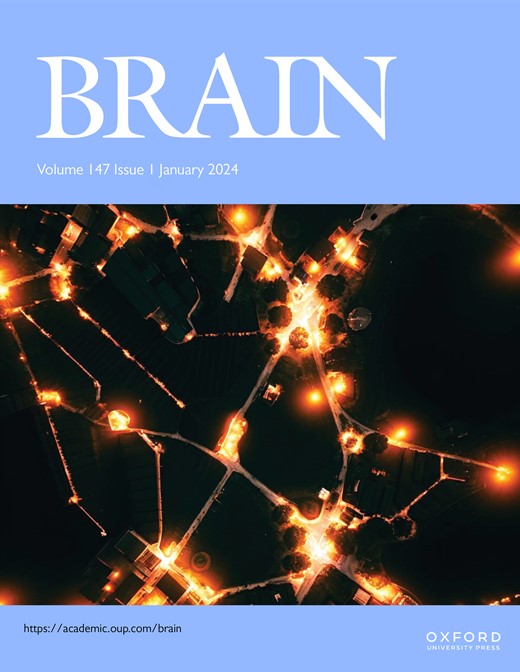肌萎缩性侧索硬化症中myc驱动的胶质瘤损害神经元-胶质细胞的通讯。
IF 11.7
1区 医学
Q1 CLINICAL NEUROLOGY
引用次数: 0
摘要
神经胶质细胞的慢性激活导致肌萎缩侧索硬化症(ALS)和额颞叶痴呆(FTD)患者的运动和皮质神经元功能障碍和变性,其机制尚不清楚。为了阐明神经胶质瘤对疾病发生和进展的影响和作用的分子发病过程,我们使用细胞、小鼠和患者来源的细胞建模TDP-43、SOD1和c9orf72相关的散发性ALS。我们的数据揭示了一个顺序的疾病进展,从增强的胶质反应性和增殖开始,过渡到促炎基因上调的炎症。通过小鼠遗传学研究,我们发现星形胶质细胞中突变体TDP-43的表达是引起胶质细胞增生和行为异常所必需的。从机制上讲,我们发现胶质MYC的功能获得通过促进星形胶质细胞衍生的ev的释放来驱动神经退行性变,尽管这些ev不能为周围的神经元提供营养支持。我们的研究揭示了MYC在肌萎缩性侧索硬化症中胶质细胞与神经元之间的沟通错误中的一种新的功能作用。本文章由计算机程序翻译,如有差异,请以英文原文为准。
MYC-driven gliosis impairs neuron-glia communication in amyotrophic lateral sclerosis.
Chronic activation of glial cells leads to the dysfunction and degeneration of motor and cortical neurons in amyotrophic lateral sclerosis (ALS) and frontotemporal dementia (FTD) with an unknown mechanism. To shed light on the molecular pathogenetic processes underlying the exordium and contribution of gliosis to disease onset and progression, we used cells, mice, and patient-derived cells modeling TDP-43, SOD1, and C9orf72-linked and sporadic ALS. Our data reveal a sequential disease progression, starting with enhanced glial reactivity and proliferation, and transitioning into inflammation with upregulation of pro-inflammatory genes. Using mouse genetics, we show that expression of mutant TDP-43 in astrocytes is necessary to cause gliosis and behavioral abnormalities. Mechanistically, we show that glial MYC gain-of-function drives neurodegeneration by promoting the release of astrocyte-derived EVs that nonetheless fail to provide trophic support to surrounding neurons. Our research reveals a novel functional role for MYC in glia-to-neuron miscommunication in ALS.
求助全文
通过发布文献求助,成功后即可免费获取论文全文。
去求助
来源期刊

Brain
医学-临床神经学
CiteScore
20.30
自引率
4.10%
发文量
458
审稿时长
3-6 weeks
期刊介绍:
Brain, a journal focused on clinical neurology and translational neuroscience, has been publishing landmark papers since 1878. The journal aims to expand its scope by including studies that shed light on disease mechanisms and conducting innovative clinical trials for brain disorders. With a wide range of topics covered, the Editorial Board represents the international readership and diverse coverage of the journal. Accepted articles are promptly posted online, typically within a few weeks of acceptance. As of 2022, Brain holds an impressive impact factor of 14.5, according to the Journal Citation Reports.
 求助内容:
求助内容: 应助结果提醒方式:
应助结果提醒方式:


